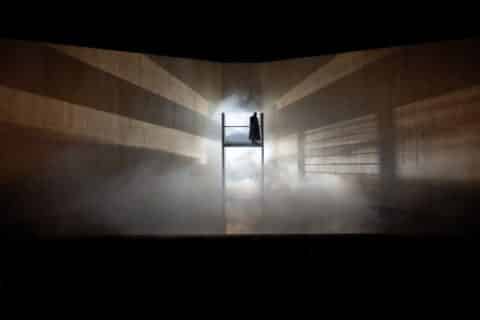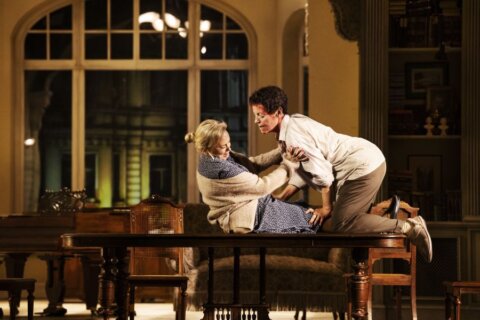RIGOLETTO • AMSTERDAM
★★★★★☆
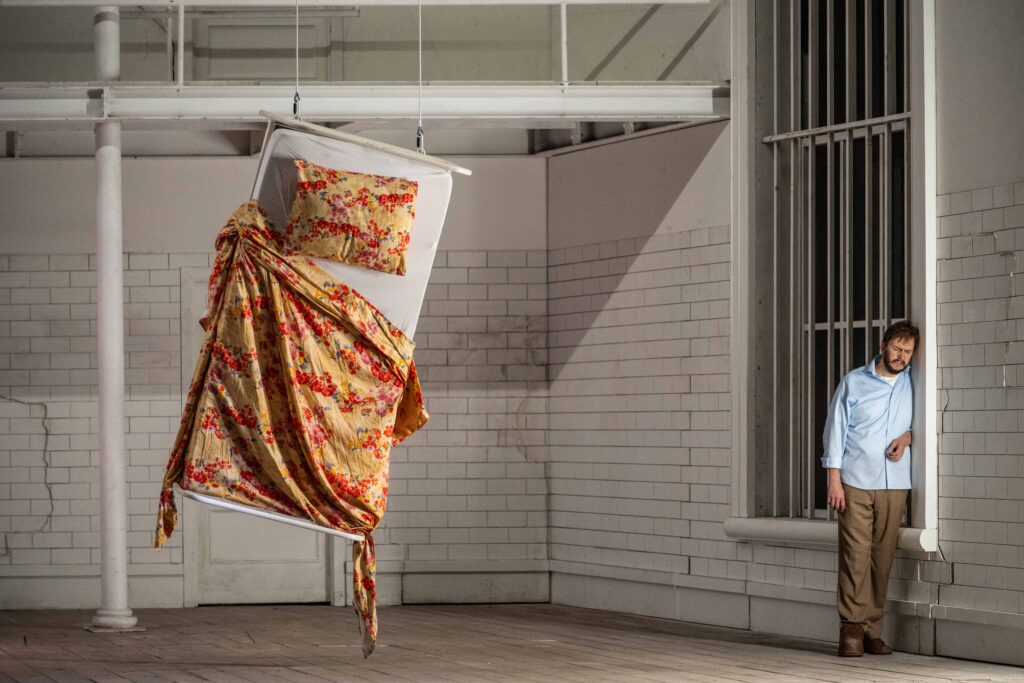
Photo: Bart Grietens
REVIEW RIGOLETTO AMSTERDAM: INSANE OPERA THRILLER IN THE SANATORIUM
There’s a pit in your stomach when Rigoletto opens at the Amsterdam National Opera in a stark white, cramped cell with tiles on the walls and bars on the windows.
Top director Damiano Michieletto has locked us in the closed ward of a mental hospital in his radical take on Verdi’s classic, which is surprising, gripping and at times scary as hell.
The large sanatorium compartment is furnished with nothing but a sink at the end of the room and a hospital cot in the center of the floor.
A shivering, traumatized Rigoletto lies here, weeping in ghostly meta-companionship with the eerily masked ghost of his daughter, who watches him while video clips of fragments of the jester’s tragic story are blown up on the back wall.
The riverbank with the wet grass, close-ups of muddy fingers opening the body bag to reveal Rigoletto’s murdered daughter after a contract killing Rigoletto has ordered on someone else.
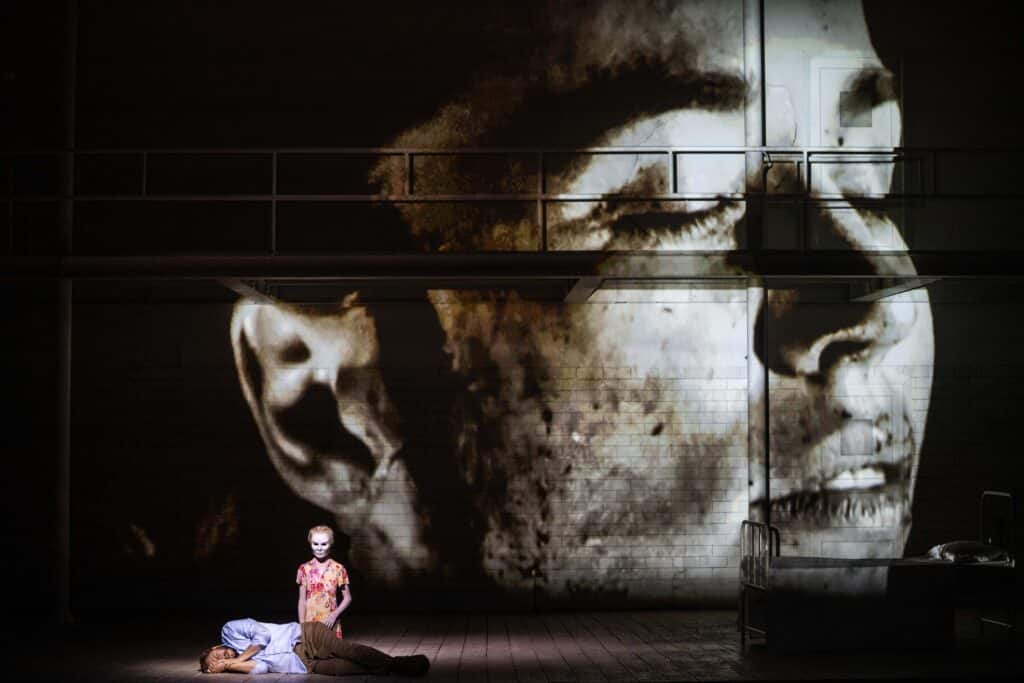
Photo: Bart Grietens
The story is told in staggered time zones so that past, present and future can unfold simultaneously.
A kind of narrative acrobatics that works quite strongly, even if it occasionally (let’s just say quite often) challenges the logic and coherence between what is being sung and what is actually happening on stage.
A premise to savor, but one that has also attracted a fair amount of predictable criticism. If this is your first time seeing Rigoletto, you’ll have a hard time getting your head round it.
The soloists are excellent, as is the orchestral playing, but it’s hard to deny that there’s something about the whole set-up that is on the one hand brilliantly conceived – and then perhaps a little contrived.
Michieletto’s innovative staging has divided opinion, but still manages to elicit rapturous applause from the audience a week after the premiere.
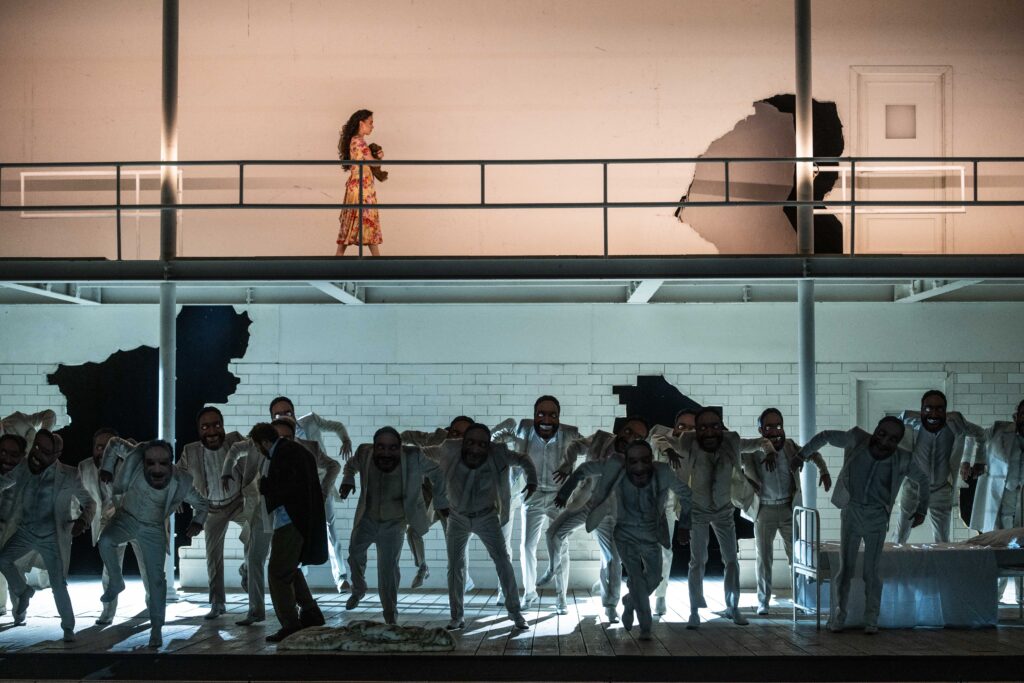
Photo: Bart Grietens
The action takes place continuously in the sanatorium’s large white cell, which is occasionally occupied by the duke’s hooligans, who famously kidnap Rigoletto’s overprotected daughter Gilda just before the interval, believing her to be the hunchbacked courtier’s mistress.
If the first part seems a little loose in its musical expression, the second part tightens the level all round. The quartet where the Duke juggles the naive Gilda, the assassin Sparafucile (Alexander Köpeczi) and his prostitute sister Maddalena (Maya Gour) is strong stuff with the broken Rigoletto madly pacing in the background.

Photo: Bart Grietens
Slender Russian Aigul Khismatullina captivates the audience with her silvery soprano in the famous coloratura aria where she sings of her love for the young, penniless student, who is really the Duke of Mantova on a ladies’ voyage under false colors.
At the top of his game is the likeable Mexican-American villainous tenor René Barbera as the Duke in the showpiece earworm Donna e Mobile.
A splendid offender aria that wouldn’t have passed muster today. (The woman is erratic, flighty and unstable – anyone who trusts her is a fool!)
Rigoletto, beautifully, beautifully delivered by Russian baritone Roman Burdenko, is on stage incessantly in Paolo Fantin’s Cuckoo’s Nest-like setting – where he sneaks around backstage for long periods, so clearly traumatized that a near-sighted person can see it without glasses.
Particularly vile is all the payback time gold confetti that is regularly sprinkled on him as a kind of extra humiliation and ridicule. Ugh, it hurts all the way to the heart.
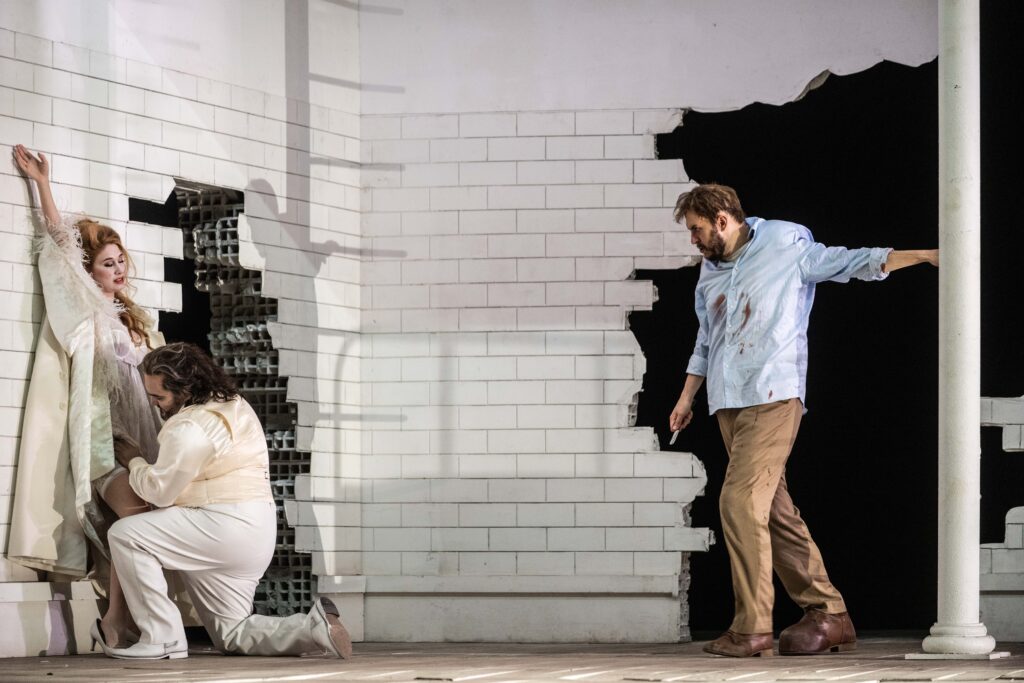
Photo: Bart Grietens
When it comes down to it, do we need some Northern Italian Renaissance ambience to create the right operatic atmosphere around Verdi’s classic from the height of his career in the 1850s, when he composed La Traviata, Rigoletto and The Troubadour in quick succession
Michieletto is one of my favorites directors for his radical takes on classics, including his powerful Red Light District Madame Butterfly from Teatro Real in Madrid, which you can read my five-star review of here.
Here in Amsterdam, I choose to reward boldness once again and signs off with five stars from GOT TO SEE THIS.

